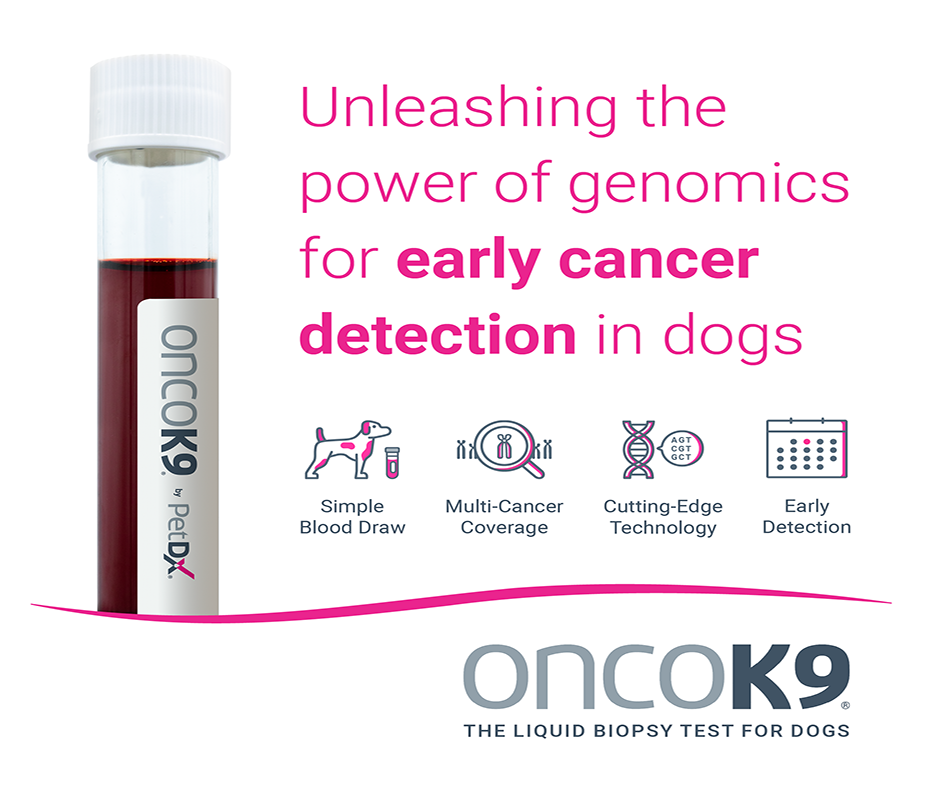624 – At-Home Early Cancer Detection Test Hits the Market
At-Home Early Cancer Detection Test Hits the Market
Chan Namgong, founder of Oncotect, joins host Laura Reeves for a very personal discussion of the value of early cancer detection for our dogs.
Namgong launched his company in 2019 in the aftermath of his mother’s cancer diagnosis. He already knew that dogs can detect human cancer by scent. But then he learned about a group of scientists that discovered that small nematodes can detect cancerous metabolites in urine in human medicine.
“What’s amazing about these small nematodes is that they have very high sense of smell,” Namgong said. “They have more olfactory receptors than dogs, despite their small size. So what we have done is we’ve developed a platform where we are using (nematodes) to detect cancerous metabolites in dogs’ urine that contains the cancerous metabolites.
“(Nematodes) are small worms, and the scientific name of them is C. elegans. And C. elegans is actually, you know, if you are a scientist or biologist, it’s a model organism. It’s widely used in different disciplines of science. In pharmacology, chemistry, biology, you know, cancer cells, stem cell research, environmental study, because we know everything about these worms. In fact, C. elegans was the very first multi-cell organism that was ever DNA sequenced. And the way we utilize them is we can actually measure the intensity of the olfactory neuron in their head.
“We can categorize pets as low, moderate or high risk of cancer. Oncotect is a screening test, not a diagnostic test. So, this is meant to be proactive and preventive measure. And then if there’s any risk, moderate or high risk, we’ll bring you back to your veterinarian for further consultation, diagnostic tests such as x -rays or ultrasound to really confirm or deny a cancer suspicion or to identify the type and location.
“Prevention of cancer is almost impossible because we don’t know what’s really truly causing cancer. But your best strategy is find it early and treat it quickly. Diagnosing a cancer is like a putting a puzzle together. You’ve got to bring different pieces of information to really look at a big picture.
“We have primarily focused on the four most common treatable canine cancers. They are lymphoma, melanoma, hemangiosarcoma and mast cell tumors. And the reason why we focus on those four is because just due to the limited resources that we have.
“We’ve tested over 700 dogs in the last year or so. And among those 700 dogs, we have detected TCC, bladder, prostate, liver, soft tissue. So we’ve detected other cancer types, but the reason why we are not making claims for them is because we haven’t run a large enough sample size to publish any scientific paper on them, which we plan to do this year.”
534 — Changing the Conversation on Cancer Diagnosis in Dogs
Changing the Conversation on Cancer Diagnosis in Dogs
Dr. Angelo Marco, DVM and Dr. Andi Flory, DVM join host Laura Reeves for an exciting conversation about advances in early cancer detection. PetDx’s OncoK9 test is able to “identify a biomarker of cancer that comes from cancer cells” from a simple blood draw, according to Dr. Flory.

Dr. Andi Flory, DVM, Chief Medical Officer at PetDX.
Flory, Chief Medical Officer at PetDx, said the OncoK9 test has the potential to revolutionize our ability to detect cancer in patients, potentially even before they start to show signs and symptoms.
While the blood test identifies a variety of cancers, it is most successful at finding the “big three:” Lymphoma, hemangiosarcoma and osteosarcoma.
“Those big three,” Flory said, “that detection rate is really high. It’s 85% and those are the most aggressive cancers that we see in dogs. So the fact that we have the potential to identify those really aggressive cancers sooner, it’s just amazing.
“The way that would kind of work, is if you think about dogs that are at high risk of cancer because of they’re getting older, for example, we know that the risk of cancer increases with age. Or because of their breed. You’re certainly aware there are some breeds that just get a lot of cancer, unfortunately. If we think about testing those individuals as a screening test, like as an annual test before they’re showing any clinical signs you know while they’re still healthy. If we can identify cancer while they’re still feeling good, then we may have a better chance of controlling it longer term.
“I think about the cases that we get almost universally when we discover hemangiosarcoma. It’s because the tumor is bleeding or it’s already spread and the metastatic lesions are bleeding and that often results in a middle of the night visit to the emergency room. It’s a snap decision. Maybe your dog looked normal that morning and then all of a sudden you’re in the ER being told your dog has a tumor on the spleen and it’s bleeding and we need to do emergency surgery and we need to do a blood transfusion and there’s really only one decision that you can make right now. It’s shocking. It’s traumatic. It’s painful for the dog. It’s all of those things and it happens so unexpectedly and it’s so emotional.”

Dr. Angelo Marco, DVM and his Border Terrier at Palm Springs Kennel Club.
“The important thing to know,” Marco said, “is that when we see a cancer signal on this test, it’s an indication of malignant tumor cells in the body right now. It’s not something that they were cured of five years ago and it’s not a predisposition test, so it’s not something that is predicting, it is something that is there in the body right now. So that really highlights the importance of going forward on that “cancer hunt” to find where is this cancer signal is coming from.”
Be sure to listen to today’s episode in full and visit PetDx for additional information.


